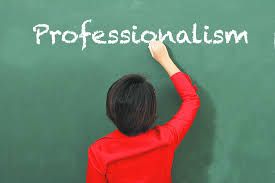The Scale of Professionalism in the Workplace
“Professionalism” is a term used quite frivolously. It’s thrown around as if it means the same thing to everyone - but it doesn’t. Depending on your company, the work environment, and your role, professionalism can range from any number of things. Professionalism is a scale.

The definition of professionalism is the competence or skill expected of a professional (thanks, Webster). Yes, professionalism is what you wear, how you present yourself, how you speak, how you do your job, and how you interact with others. However, this is not the same for every person from job to job.
Some companies allow their employees to wear sweats or jeans on a daily basis while others must be in full business apparel Monday through Friday. This can be confusing when it comes to interviewing; if you’re not familiar with the environment of the company, it’s best to play it safe rather than sorry. Dress in black slacks and a button down shirt or blouse. If you’re hired, then you will be able to adjust your dress accordingly.
Many companies insist on their employees only engaging in small talk with customers or clients, while others are okay with their employees having open conversation and joking with the client. Some employees have zero contact with clients or customers.
Not everyone works in an office, keep that in mind next time you hear about professionalism in the workplace. Instead, ask questions. What workplace? Where? Which position? Professionalism is situational.
Professionalism changes from one position or company to the next. It’s best to adapt to the company’s expectations of professionalism and maybe not the version of professionalism that you are most familiar. Companies establish their own what professionalism means to them, and it’s up to the employee to adjust accordingly. Next time you hear the term “professionalism,” think of who is saying it and what that may mean to them in their industry - and where you’ll feel most comfortable.
.png?token=6adcf38ed58846e4f05e97718ba6eb6d)